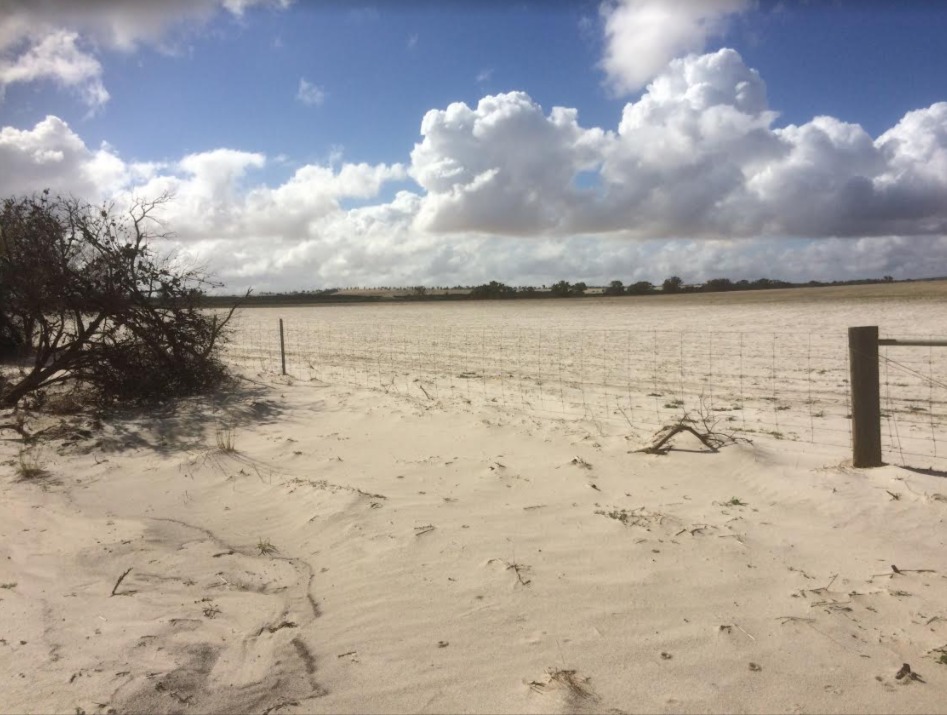
WA landholders have been urged to take action to prevent soil erosion to protect the yield and quality of future crops and pastures.
LANDHOLDERS across Western Australia’s grainbelt have been reminded to manage paddocks to reduce the risk of soil erosion, after strong winds lashed the region recently.
Senior research scientist Paul Findlater said it was important to maintain ground cover over the summer and autumn months to prevent valuable topsoil from being blown away, reducing the yields and quality of future crops and pastures.
“Harvest is nearly complete in most areas so paddocks have either standing stubble or dry pasture cover,” he said.
“Now can be a good time for landholders to assess paddocks and areas within paddocks for their vulnerability to wind erosion.
“The department recommends landholders aim to have at least 50 per cent stubble or pasture groundcover, of which about 30 percent should be anchored in the soil, by the beginning of autumn to prevent soil from being picked up by the wind.”
Mr Findlater said to pay particular attention to vulnerable areas, which can include places where crop or pasture growth has been sparse.
“Areas where there have been fires, stock camps and high machinery traffic, as well as the tops of sandy rises may also be particularly vulnerable.
“For areas more vulnerable to wind erosion, it is important to minimise soil destabilisation by keeping vehicles, machinery and stock off paddocks to prevent soil disturbance and further loss of soil cover,” he said.
“Protecting the soil cover now has benefits down the track including improved rainfall infiltration, reduced soil water loss, improved soil organic matter and soil structure and protecting seedlings from sand blasting in the upcoming season.”
Livestock feed and water management will be critical in coming months, with many growers already providing supplementary feeding.
Mr Findlater said producers needed to be mindful of stocking rates and feed budgeting to manage paddock grazing pressures and ensure there was adequate coverage on pasture paddocks.
“It is also important to keep stock off vulnerable paddocks by considering confinement feeding and feedlotting, while producers could also assess the cost-benefit of agisting or selling stock before both stock and paddocks lose condition.”
Landholders intending to undertake soil amelioration are encouraged to delay activities until later in the seeding program when soil is moist to minimise the risk of erosion and capture numerous agronomic and operational benefits.
Senior research scientist Stephen Davies said delaying soil amelioration could reduce costs and improve efficiencies.
“It is more effective and there are also agronomic advantages to ameliorating moist soil,” Mr Davies said.
“With ongoing dry conditions in many parts of the Grainbelt, coupled with sparse ground cover in some districts, sandy soils are already at risk of erosion, which could be exacerbated by soil amelioration or grazing.”
Erosion is a land degradation issue identified by the Soil and Land Conservation Act.
The Commissioner of Soil and Land Conservation encourages landholders to actively manage their soils to prevent erosion issues and avoid further action under the Act.
The Department of Primary Industries and Regional Development’s Season 2021 webpages have a range of information and articles to assist growers to manage wind erosion.
For more information about managing erosion visit the department’s Season 2021 webpages via its homepage agric.wa.gov.au
Source: DPIRD.

HAVE YOUR SAY